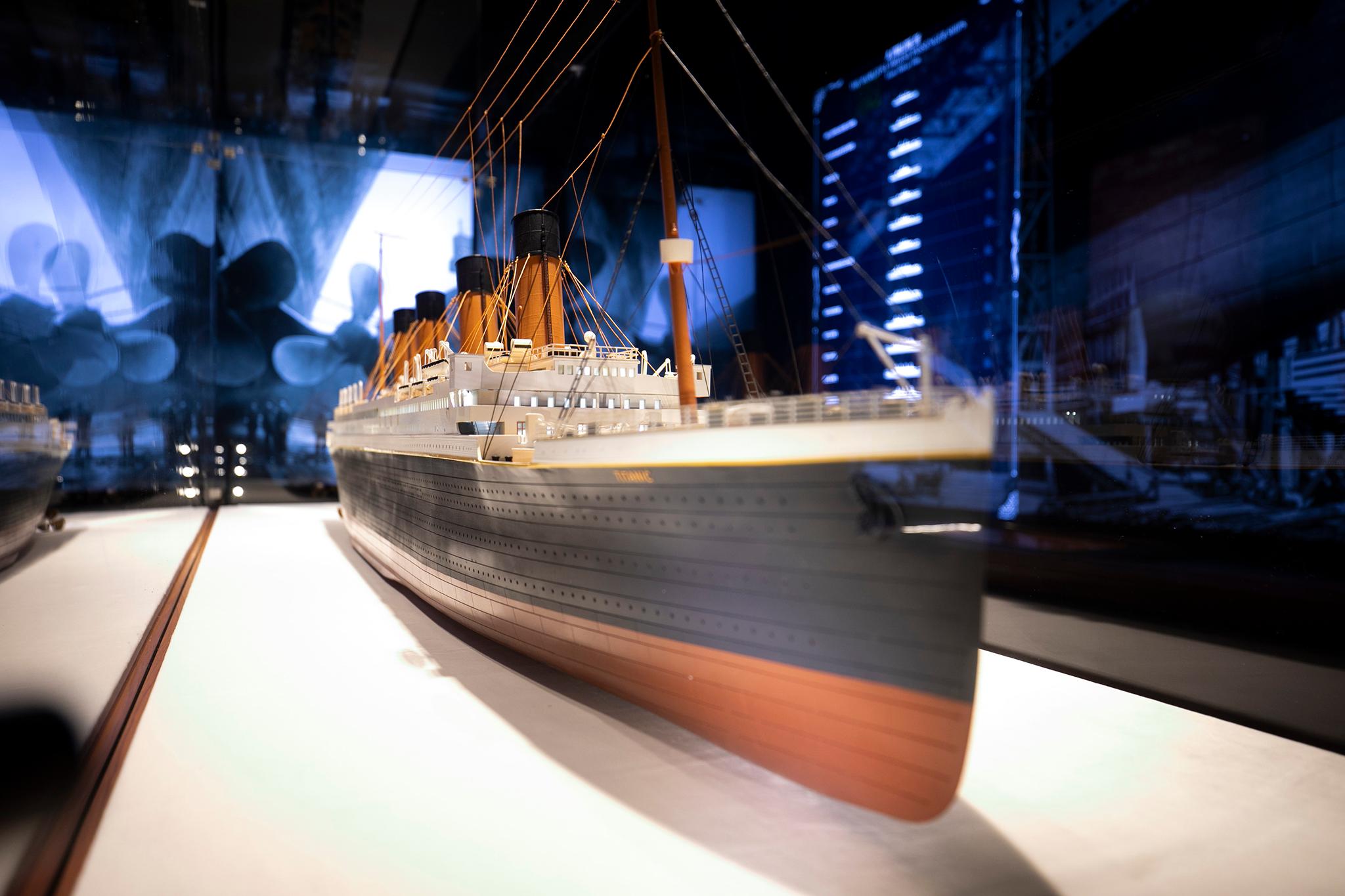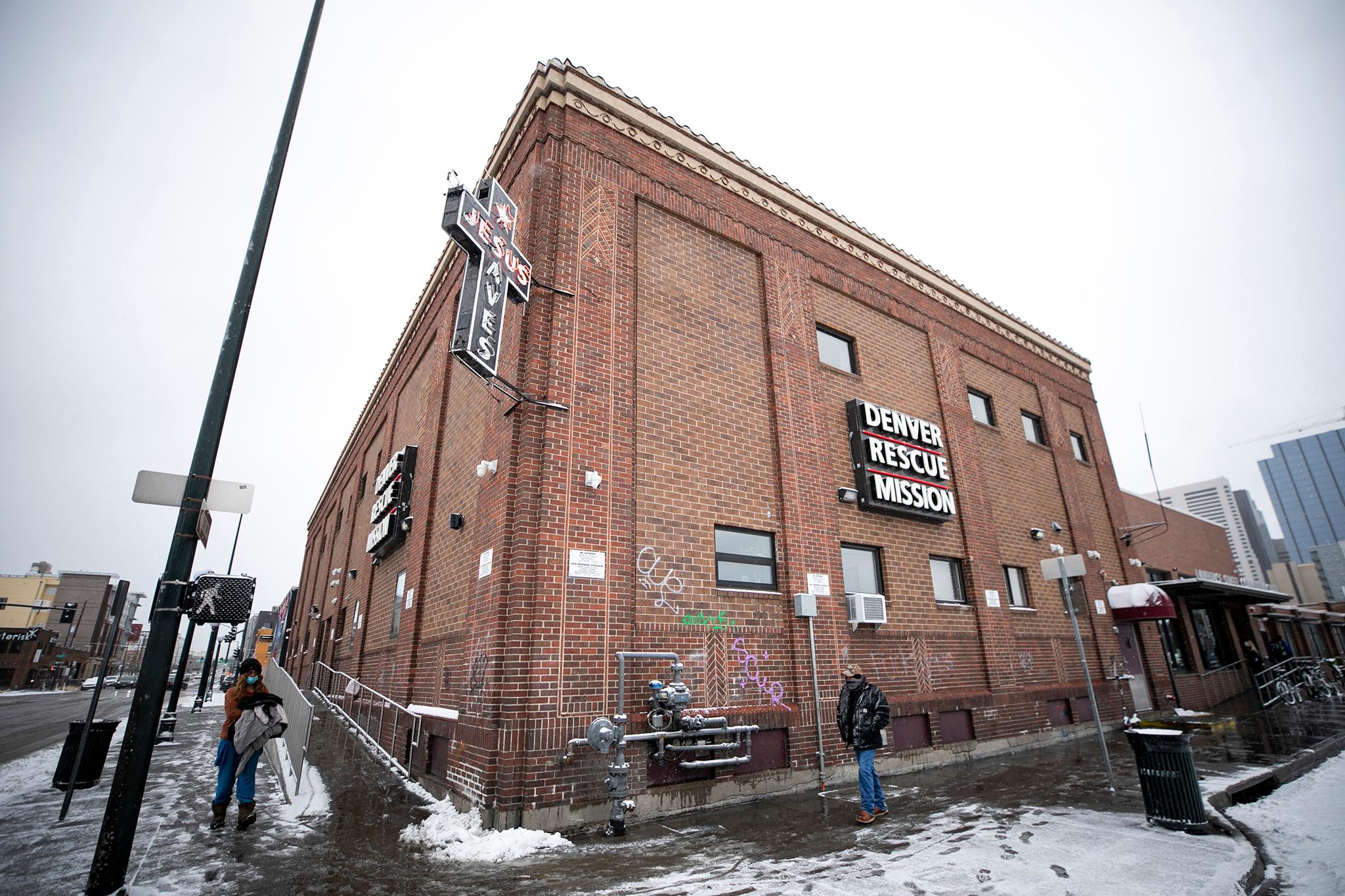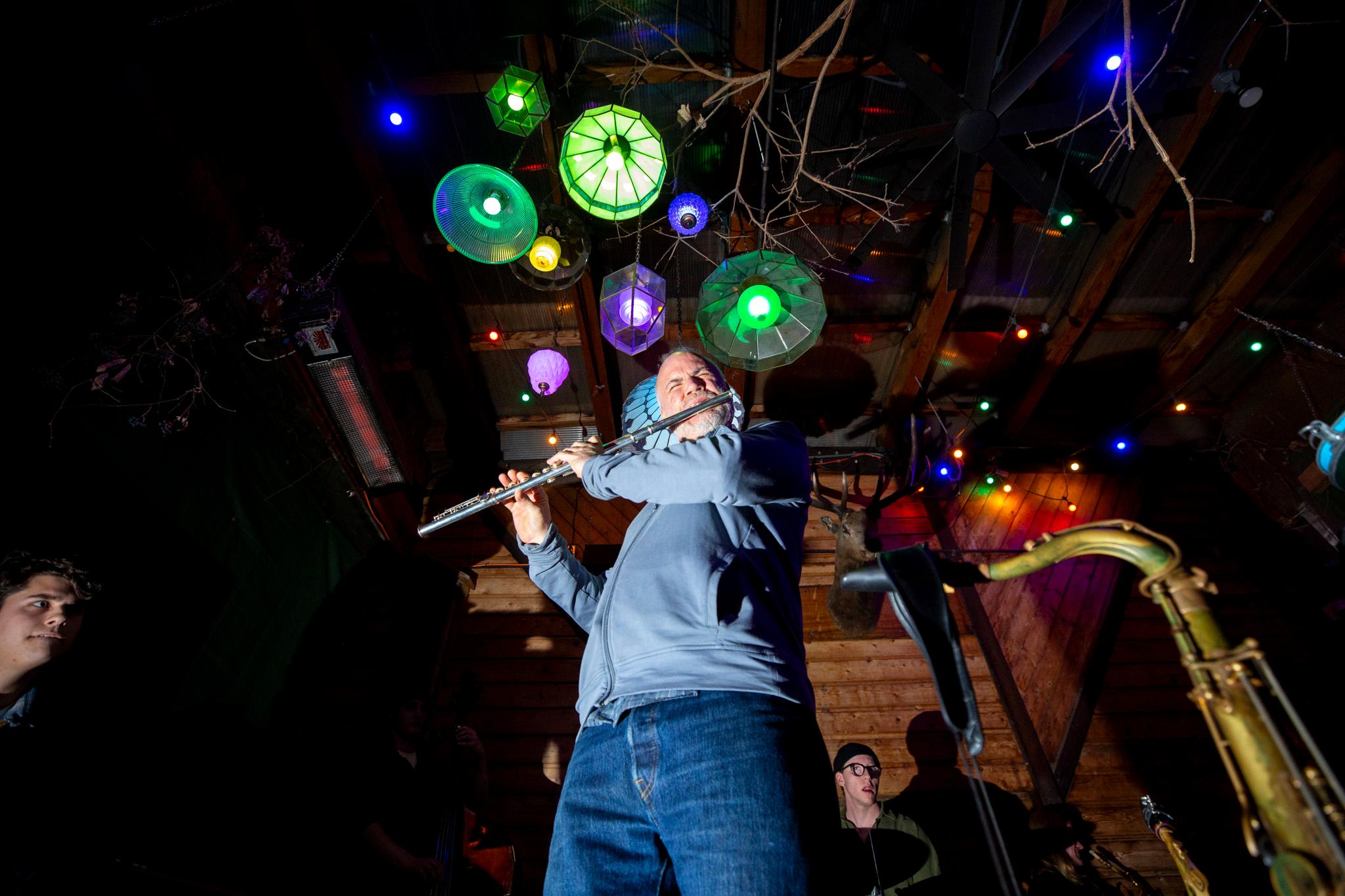It’s been 112 years since the RMS Titanic descended into the Atlantic’s briny depths. Even a century later, people are still entranced by its catastrophic demise.
It’s one reason why there are two parallel exhibitions about the ship this month in Denver.
The first, hosted by Historic Denver’s Molly Brown House, dives deep into the historic record, spinning a true tale about what happened after the disaster.
The second show, "Titanic: An Immersive Voyage," opens Thursday at Lighthouse ArtSpace and brings audiences on deck as it tells the story of the ship’s creation, the night of its sinking and the people aboard. We took a spin through the immersive show as its crew readied it for the public.
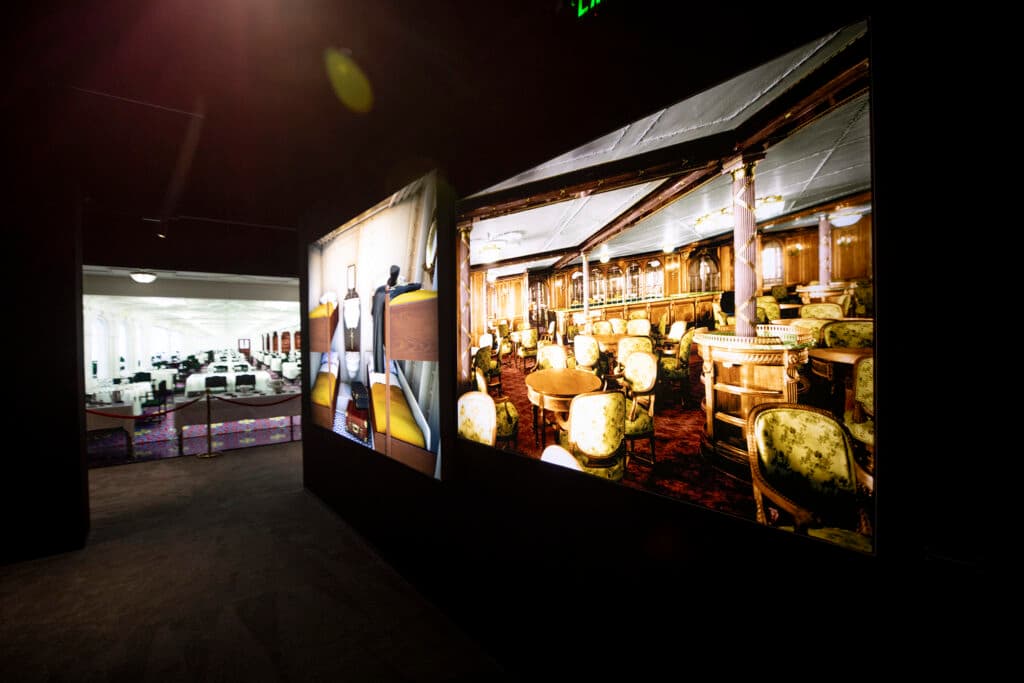
Images of dining rooms and cabins on display in "Titanic: An Immersive Voyage." Kevin J. Beaty/Denverite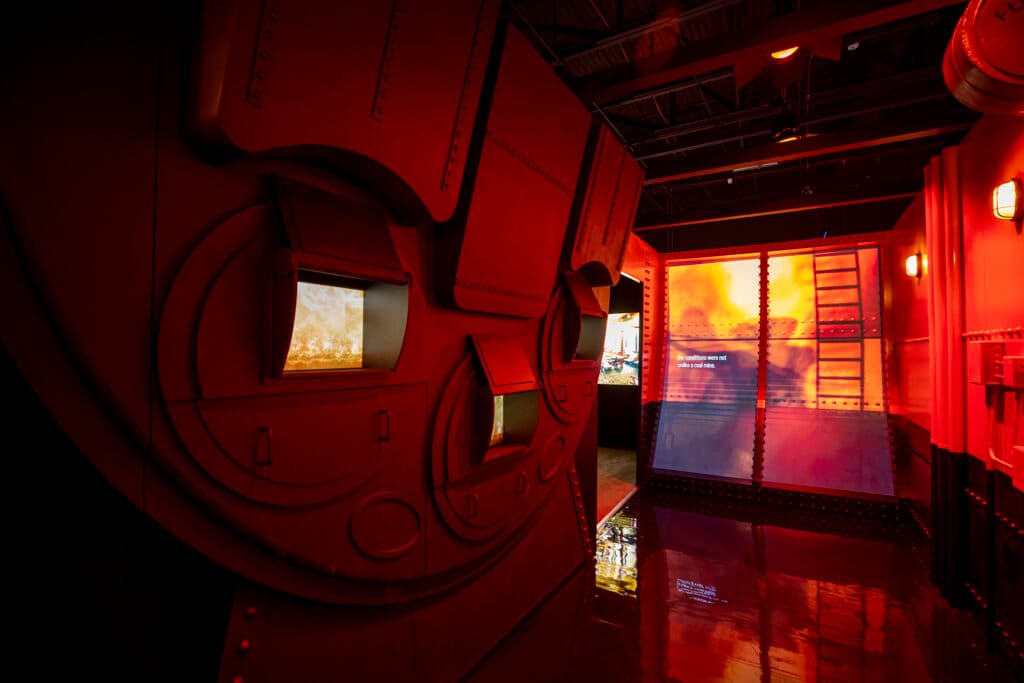
A mock boiler room in "Titanic: An Immersive Voyage." Kevin J. Beaty/Denverite
"Titanic: An Immersive Voyage" is all about reliving history.
The exhibition leads audiences through phases of the ship’s short life, from its birth in Belfast to its watery grave. Along the way, the audience can imagine standing on deck, gazing off its crow’s nest and maneuvering its massive steering wheel.
The space is filled with projection, sound and recreated spaces. A mock boiler room glows orange with simulated coalfire. Audiences are invited to sit in a lifeboat toward the end, in a room covered with projected video that transforms the floor into a tumultuous sea.

Along the way, audio guides and signage paint a picture of what life was like a century ago: how people slept, how they ate and why they boarded the ship to begin with.
Many of the artifacts on display came from other ships; most of the Titanic’s plates, forks, trunks and beds remain at the bottom of the ocean.
Tickets start at $23 for kids, and go as high as $42 for the “VIP” experience that comes with free access to a virtual reality experience. People who buy regular tickets can opt into the VR piece for an additional $10. The show runs through the first week of July.
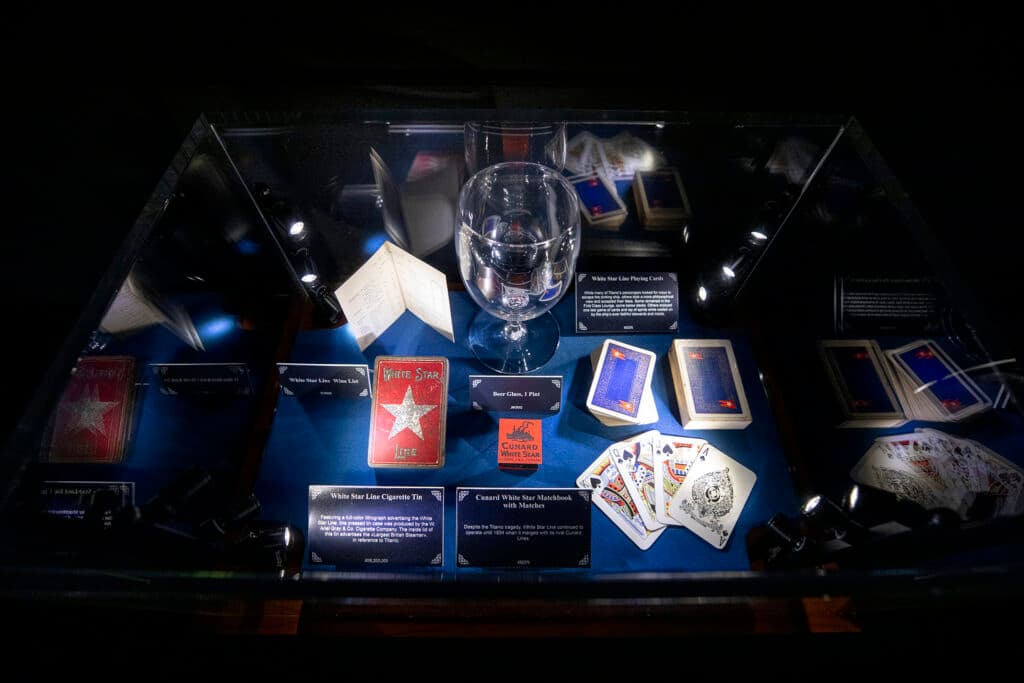
Ephemera from White Star Lines, the company that owned the Titanic. Kevin J. Beaty/Denverite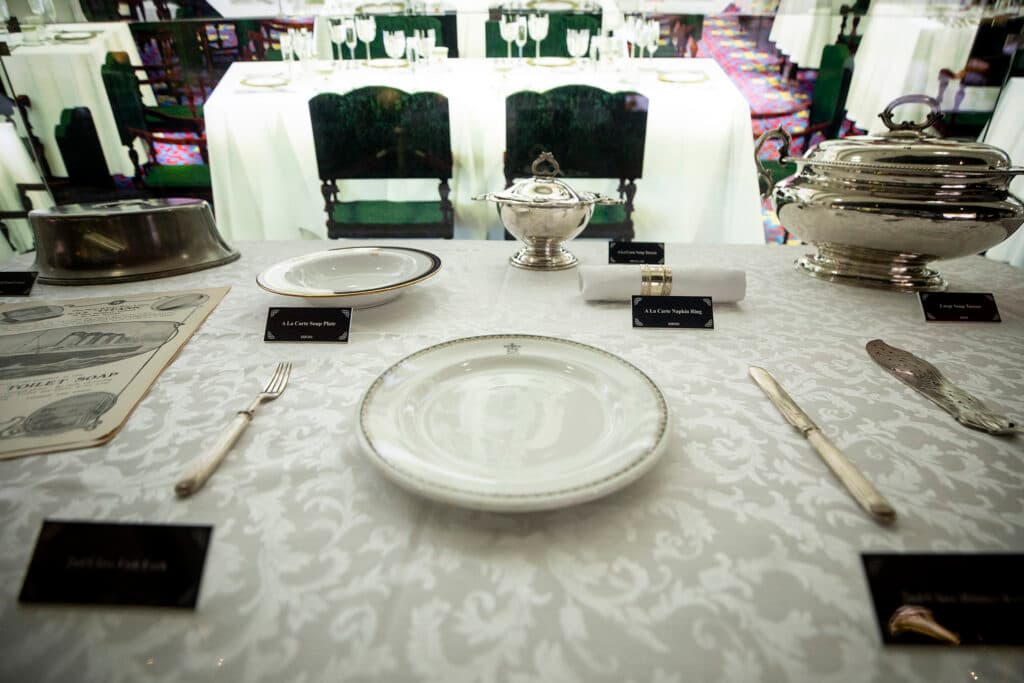
Dining gear is on display in a simulated dining room. Kevin J. Beaty/Denverite
It seems the organizers of the two dueling experiences are working together.
A few people from Historic Denver were waiting to get inside when we arrived for our visit on Tuesday. Jay Homstad, director of preservation advocacy for the organization, said the Molly Brown House loaned out some artifacts to ensure this show nailed the local tie to the disaster. Brown was among the Titanic’s most famous survivors.
Likewise, there was a flyer at the show pointing people to the Molly Brown House’s exhibition, which gets into Brown’s work to fundraise for surviving crew members after the ship sank.

While “immersive” exhibitions have been derided in the press as cheap moneygrabs, Homstad said he enjoyed this sneak preview. It’s accessible, he said, something that might inspire viewers to dig deeper — perhaps into the artifacts and documents on display in Brown’s mansion.
“I see myself bringing my nephews here,” he said. “It’s a great access point to the tragedy, in a very unique way, that will then hopefully lead them to want to learn more — and hopefully will bring them to the Molly Brown House.”
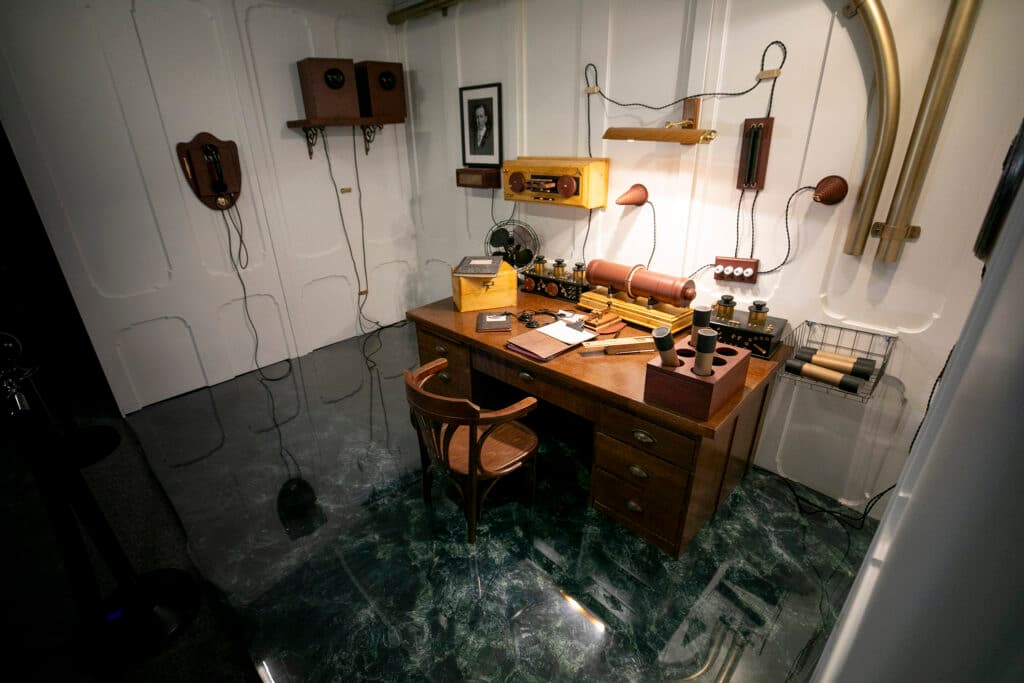
A recreation of the Titanic's Marconi room, from which SOS signals were broadcast. Kevin J. Beaty/Denverite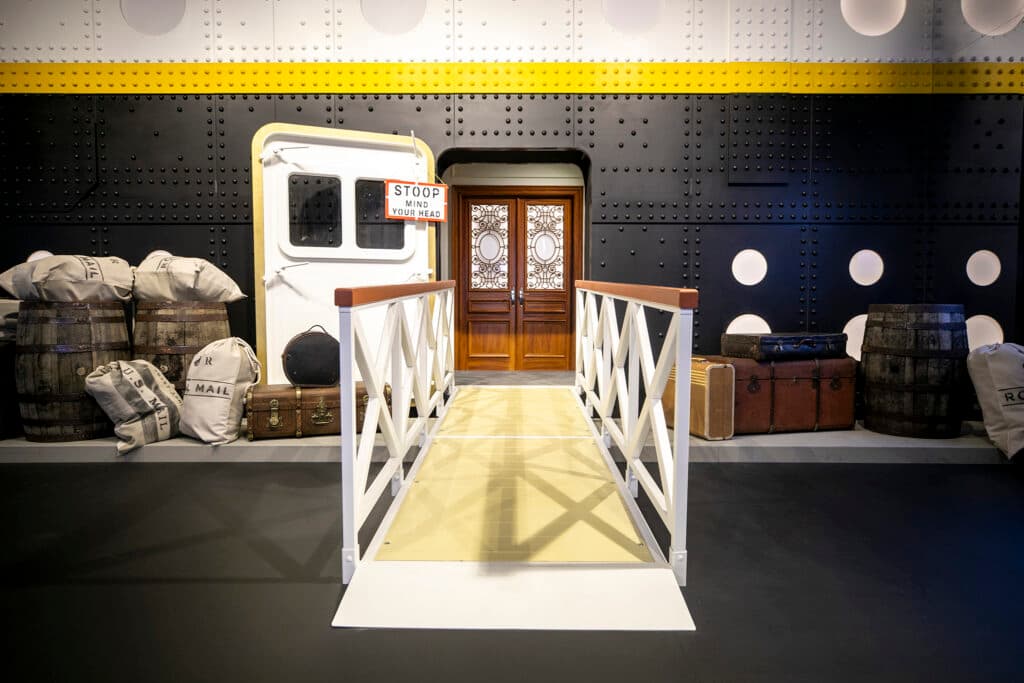
Visitors get to board the ship in their journey through the exhibit. Kevin J. Beaty/Denverite

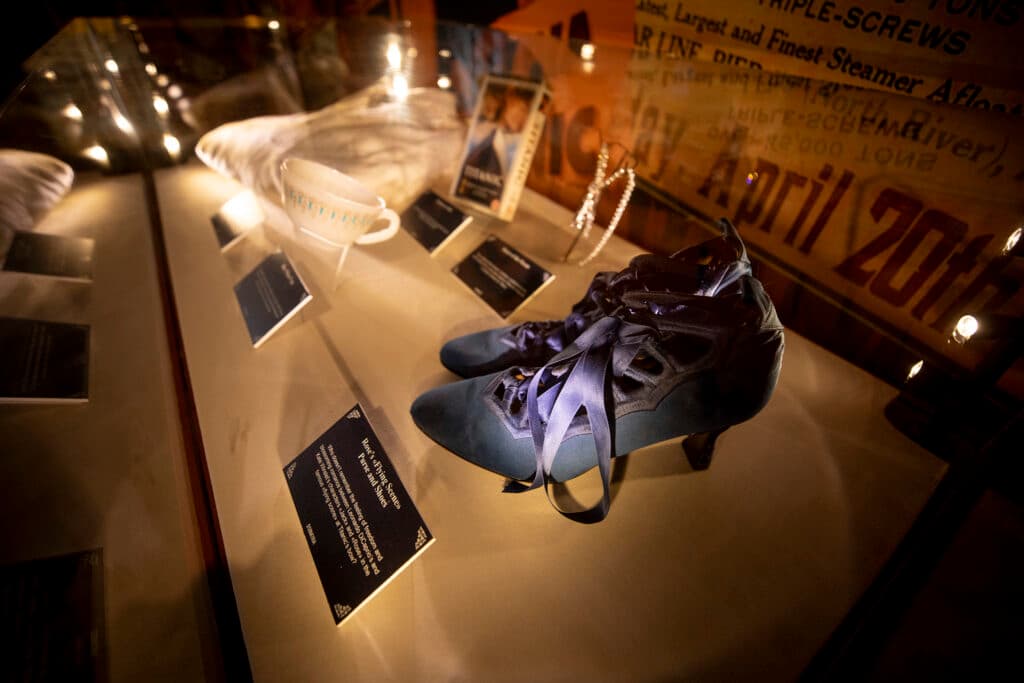
Shoes from the 1997 "Titanic" movie on display. Kevin J. Beaty/Denverite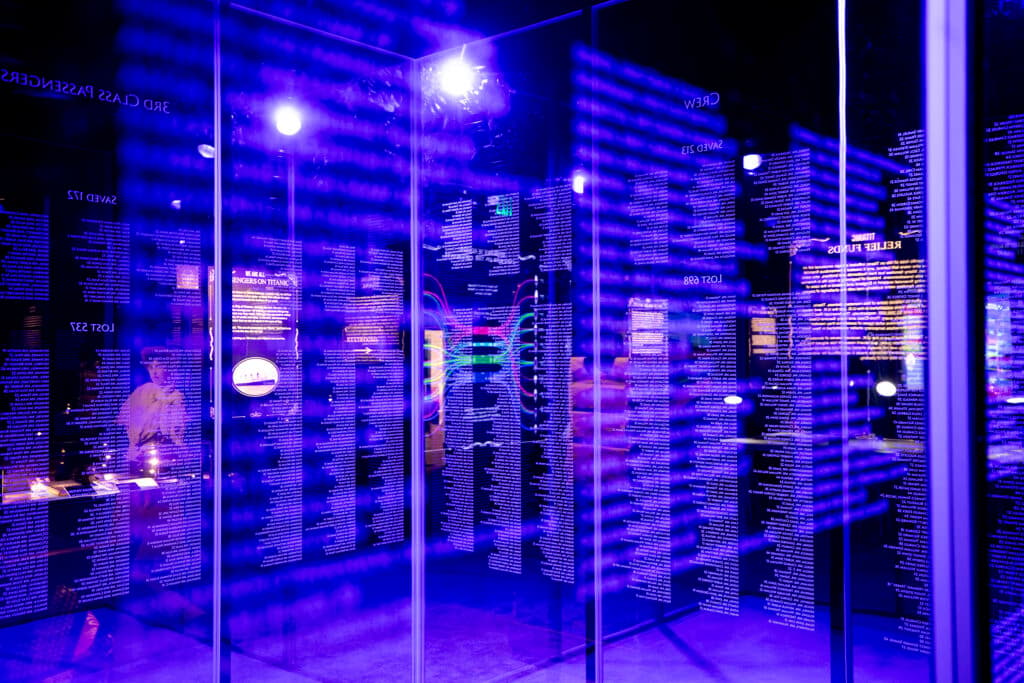
A memorial to the 1,500 people who died during the Titanic's sinking. Kevin J. Beaty/Denverite


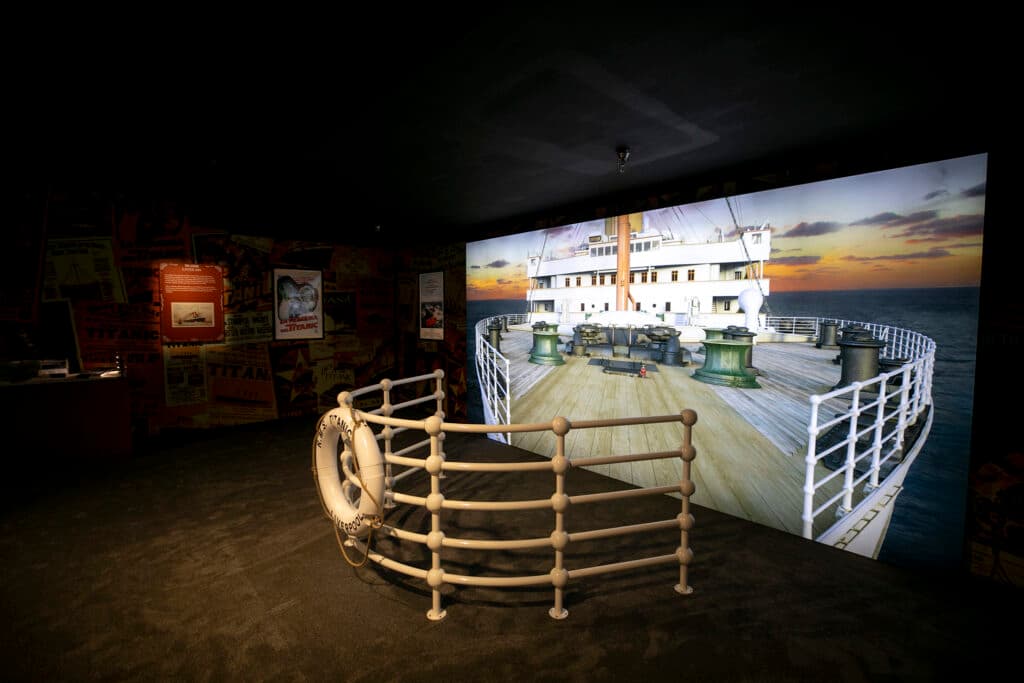
A deck simulation, perfect for selfies. Kevin J. Beaty/Denverite
A portrait of workers who may have helped build the Titanic. Kevin J. Beaty/Denverite


